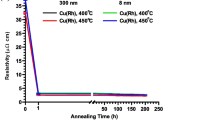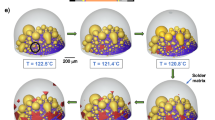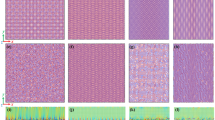Abstract
The strength of brass/Sn-Pb-Sb solder joints has been determined for solders containing 0 to 10% Sb and the fracture process examined by microscopial techniques. Intermetallic formation by interdiffusion in the Cu-Zn/8n-Pb-Sb and Cu-Zn/Pb-Sb systems were also investigated. As the amount of antimony in the solder increases the thickness and hardness of the intermetallic layer increases, and at and above 4% Sb cuboids of SnSb form in the solder. Antimony causes solid-solution strengthening of the joint up to 3% Sb and a ductile fracture occurs at the solder/intermetallic interface. At and above 4% Sb there is a fall in strength with a cleavage type of fracture associated with SnSb in the solder, and at the 8 and 10% Sb levels with fracture in the intermetallic layer. Additions of up to 10% Sb in the solder reduce the shear strength by only 10%, but cause the joint to have o variable and occasionally very low fatigue resistance. Interdiffusion studies show that the Cu-Sn intermetallic phase formed with the antimony-containing solder is not based on the ɛ-phase, and is probably based on the η-phase in the Cu-Sn-Sb system.
Similar content being viewed by others
References
B. T. K. Barry andC. J. Thwaites, “Tin and its Alloys and Compounds” (Pergamon, London, 1984) p. 88.
H. H. Manko, “Solders and Soldering,” 2nd Edn. (McGraw Hill, New York, 1979) p. 101.
M. L. Ackroyd,C. A. Mackay andC. J. Thwaites,Metals Tech. (February 1975) 73.
W. A. Baker,J. Inst. Metals. 65 (1939) 277.
S. J. Nightingale andO. F. Hudson, “Research Monograph No. 1” (British Non-Ferrous Metals Research Association, London, 1942).
K. R. Stone, R. Duckett, S. Muckett andM. Warwick,Brazing and Soldering No. 4 (1983) 20.
C. J. Thwaites andD. McDowall,ibid No. 6 (1984) 32.
R. A. Hagstrom andR. N. Wild, in Proceedings of International National Electronic Packaging Conference, Brighton, October 1969 (Kiver Publications Inc) p. 271.
Report of the International Tin Research Council (Spring 1982) p. 14.
“Metals Handbook”, Vol. 5 (American Society for Metals, 1979).
M. Tasaki,Mem. Coll. Sci. Kyoto Imp. Univ. 12 (1929) 227.
F. H. Howie andE. D. Hondros,J. Mater. Sci. 17 (1982) 1434.
Author information
Authors and Affiliations
Rights and permissions
About this article
Cite this article
Tomlinson, W.J., Bryan, N.J. The strength of brass/Sn-Pb-Sb solder joints containing 0 to 10% Sb. J Mater Sci 21, 103–109 (1986). https://doi.org/10.1007/BF01144706
Received:
Accepted:
Issue Date:
DOI: https://doi.org/10.1007/BF01144706




